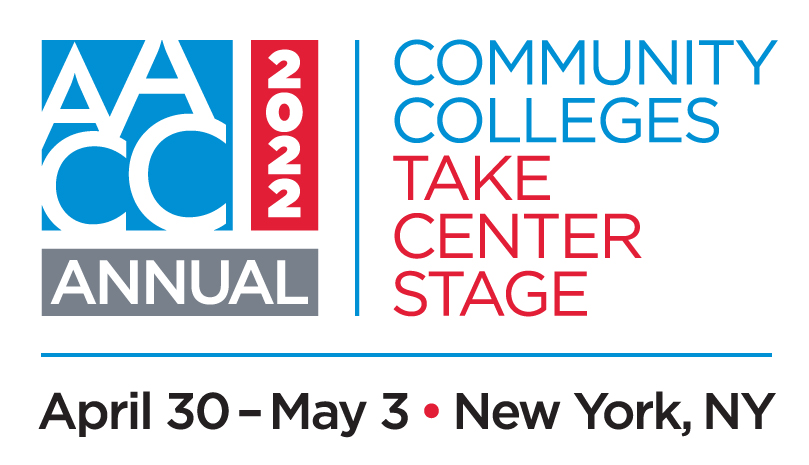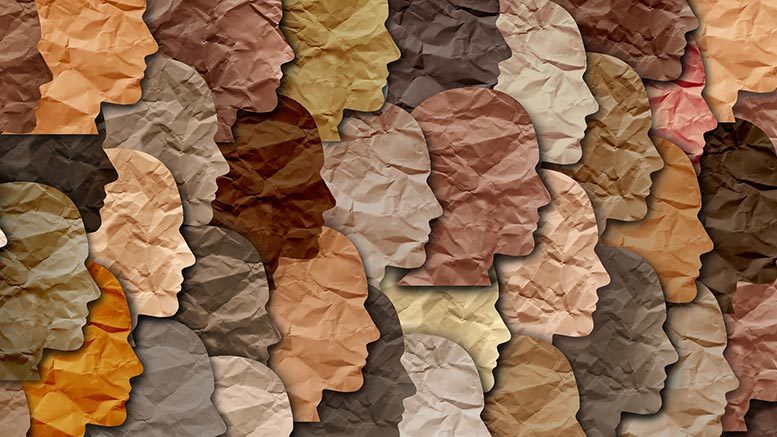NEW YORK — Long Beach City College’s (LBCC’s) equity awakening was triggered by two powerful moments.
The first occurred when the California college’s student equity plan – something required of all community colleges in California – was analyzed by the University of Southern California’s Center for Urban Education. A simple keyword search revealed that racialized words – such as Black and Latino – actually appeared very few times. This was despite the fact that 80% of LBCC students are students of color.

The college was developing its plan with a “colorblind lens,” instead of being race-conscious, said LBCC Superintendent-President Mike Munoz, who spoke about the issue at a session this week at the 2022 AACC Annual.
At the same time, there was a national outcry for racial justice following the May 2020 murder of George Floyd by police in Minnesota.
Those two things led to a call to action, and LBCC’s board of trustees adopted the Framework for Reconciliation to elevate racial consciousness.
“There wasn’t time to wait,” said LBCC Board President Uduak-Joe Ntuk.
For the first time, there was a progressive majority of people of color on the college’s board who were eager to lead the work.
“It’s unique that the stars were aligned,” Munoz said.
The work that followed was based on South Africa’s post-apartheid Truth and Reconciliation process in the 1990s and involved four phases: acknowledging there was a problem, listening, convening and catalyzing action.
Acknowledgment
The “acknowledgment” phase happened in summer 2020.
“It was a huge moment to acknowledge racial inequality existed,” Munoz said.
The college acknowledged the opportunity gaps between students of color – particularly Latino and Black/African-American students – and white students.
It also acknowledged there was a demographic disparity between the student body and employees, and the historical lack of diversity on the board, said Herlinda Chico, vice president of the LBCC board of trustees. Chico also is the first person of color elected to that position, and board president Ntuk is the first Black president of the board.
“We’re still breaking barriers in Long Beach,” Chico said.
Listening and convening
The “listening” phase, which took place on Zoom in fall 2020, involved listening to accounts and experiences of racial injustice, inequity or harm. Students, staff and faculty were split into separate sessions and split again by racial affinity groups. LBCC hired outside facilitators from the California Conference for Equality and Justice (CCEJ) to oversee the process.
There were concerns at first. Some people expressed worries of retaliation for what they might say during those sessions. But for those who participated, there were “a lot of emotions in the room,” Munoz said. “Recounting experiences can be traumatic,” he added.
But those conversations also were “brave and authentic,” he said – even when they became uncomfortable. Munoz admitted to sweating through a few shirts during those discussions.
The college also used online surveys to capture the feelings and concerns of who didn’t feel comfortable in a focus group.
Through listening, LBCC identified five key areas to focus on:
- BIPOC (Black, Indigenous and people of color) student and staff representation
- Racial affinity spaces and connections
- BIPOC student belonging
- Accountability policies and practices
- Rebuilding a culture of trust
During the “convening” phase in spring 2021, a group of about 50 employee volunteers met in two, three-hour virtual meetings, facilitated again by CCEJ. Through the two convenings, participants began to shape reform ideas.
Catalyzing action
Five campus-funded employee groups – design teams – are putting those ideas into action. Some actions have been immediate. Prior to the pandemic, LBCC began offering bus passes for low-income students. That’s now been expanded to all students.
And recognizing some LBCC students experience homelessness, the college initiated a parking pilot program so students can park at LBCC overnight and have access to showers on campus.
LBCC also is recognizing dates that resonate with students, such as Cambodian Genocide Day (the city has a large Cambodian population) and Pride Day.
It’s important for students to “see that solidarity,” Chico said.
Art throughout the campuses is changing, too.
“Our walls talk. What are they saying?” Munoz said.
A lot of the photos in prominent areas, for example, had been black-and-white photos of white people from the 1920s. LBCC has put up photos to visibly recognize leaders of today. They brought in intercultural artists, too, to design murals where students can see themselves.
This is all contributing to students’ sense of belonging.
In addition, a $30 million gift from MacKenzie Scott, will, in part, provide scholarships for Black students and help LBCC enact more student supports as part of its equity and justice work. Munoz admitted there was pushback about specifying scholarships for Black students, but data show that Black students have a larger achievement gap.
The college “is being conscious about aligning resources with students who are most in need,” Munoz said. He added: “This is an alliance. We’re not going to play politics game of the past.”

